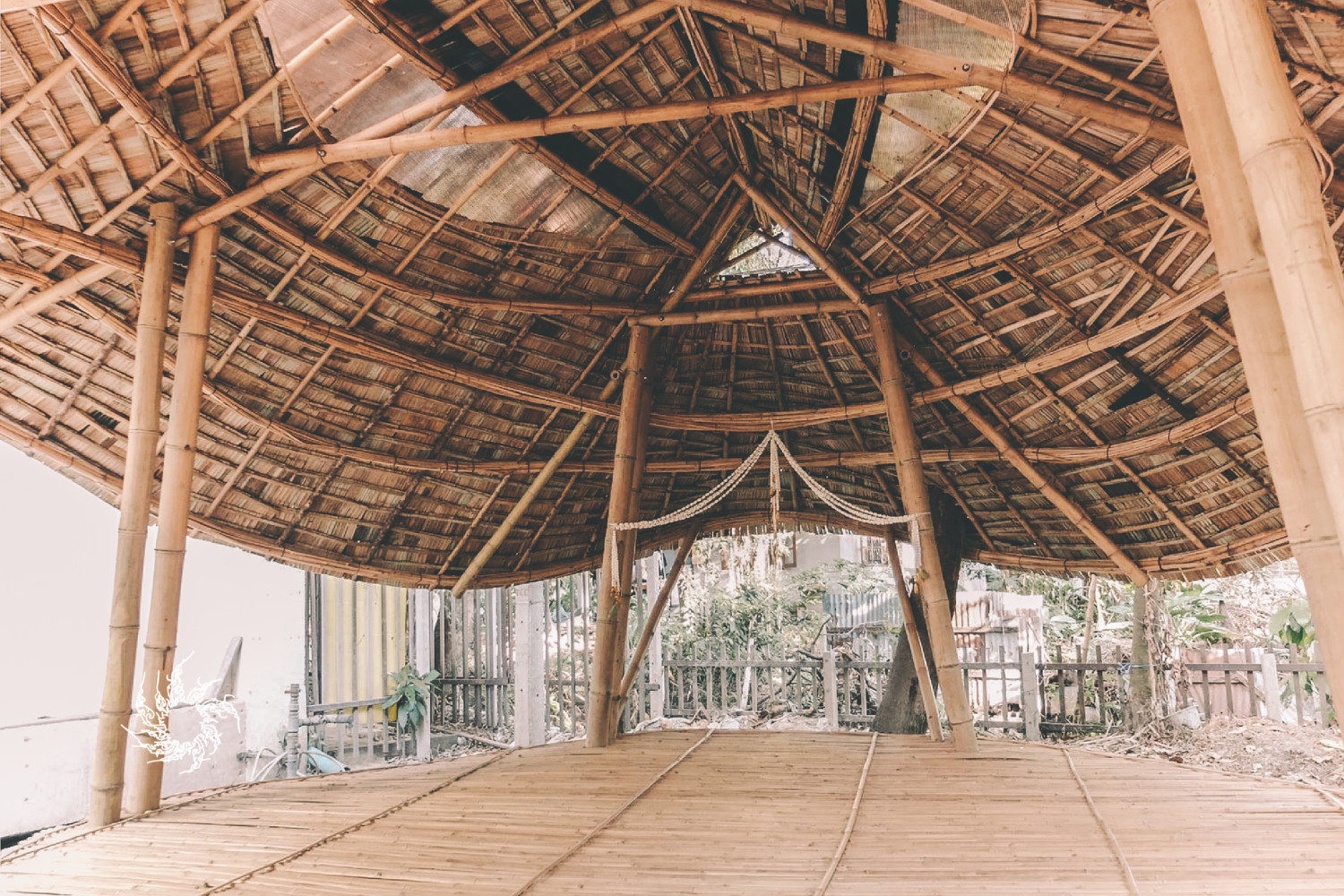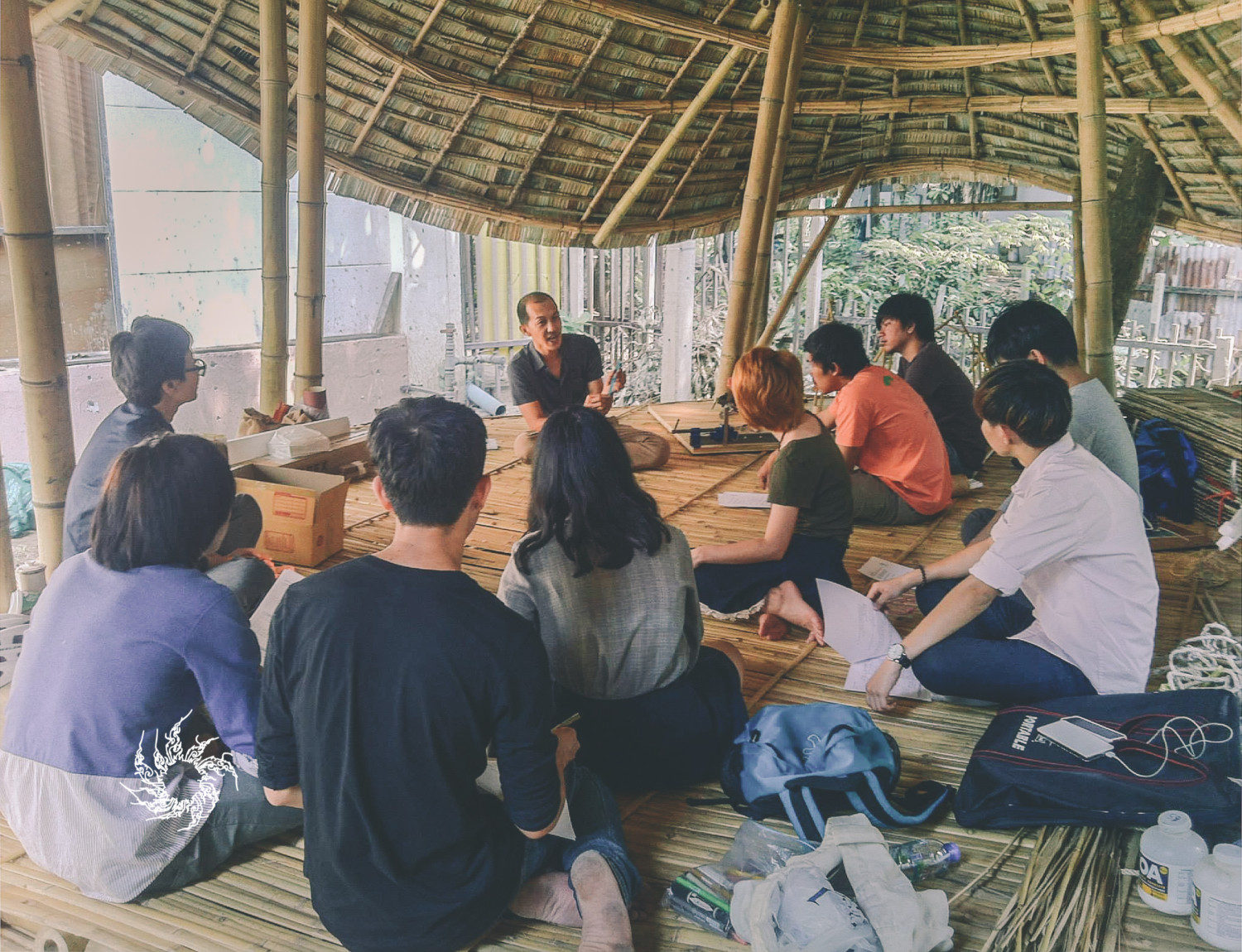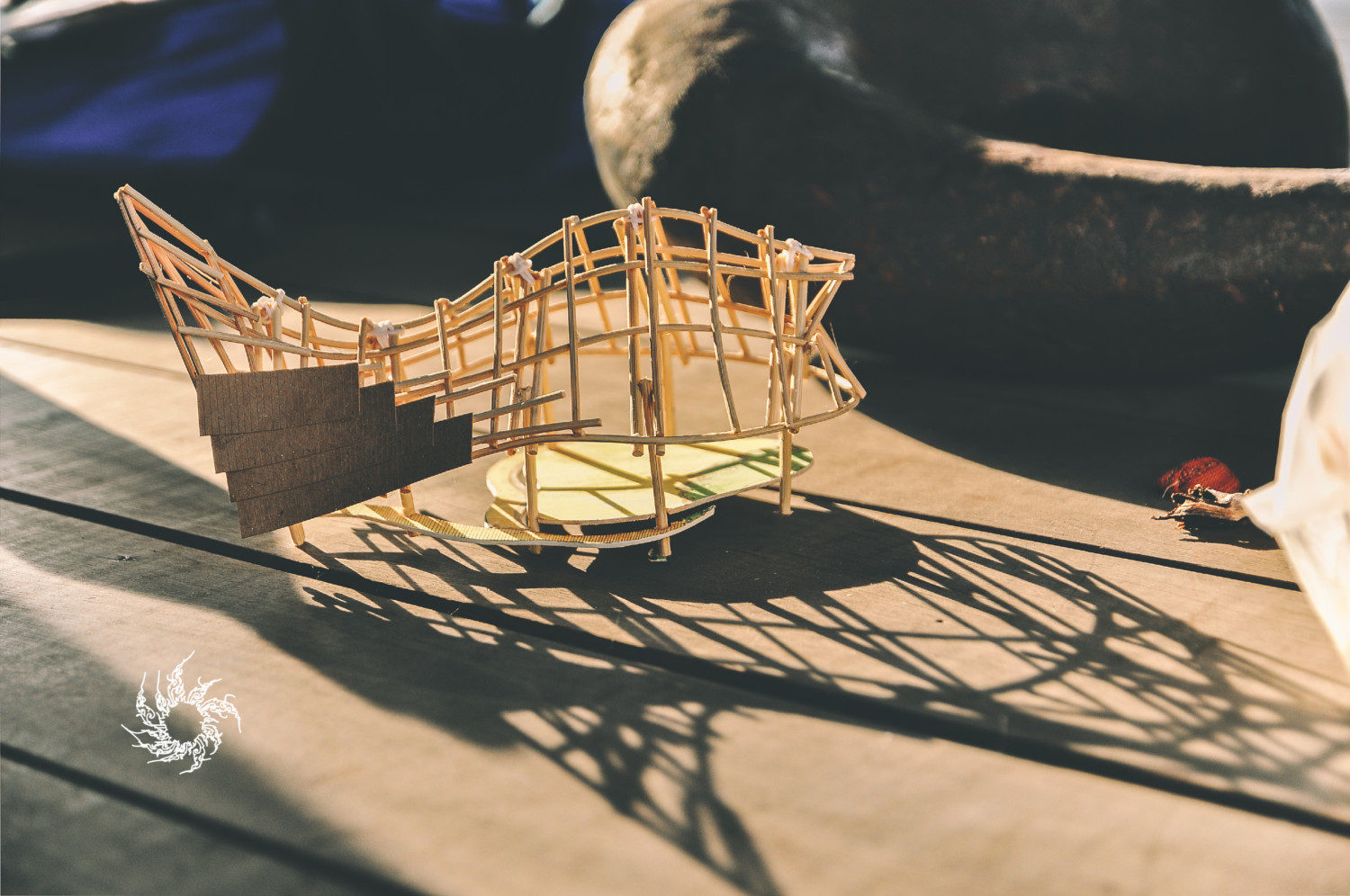
This building was collaboratively designed by first year students in 2014 consists of 10 members together with instructors and experts who lead the learning process, gave a fundamental information and suppored the student from design to construction process. Students had an opportunity to learn a conventional bamboo architecture which had related with the environment, ordinary habit and belief from Mae Khong Ka folks (Karen hill tribe) in the northern part of Thailand, Mae Sariang district, Mae Hong Sorn Province, where people still serenely live with the nature. Bamboo as a key building material of this project has a higher compressive strength than wood, brick and concrete and a higher tensile strength than steel and low weight. Bamboo is effortlessly findable and economical and easy to handle and maintain without the need for sophisticated tools. Moreover, it was treated before construction begins to prolong its lifespan. After learning the advantages of bamboo as building material, all students worked on site analysis, collaborative design process, and construction. They had an opportunity to take charge throughout the entire process, including schematic design, architectural drawing, technique use of tools, structural design and construction, and working as a team. The objectives of studies and benefits :

1. To be a fundamental of kinesthetic learning, architectural students of Arsomsilp Institute of the Arts (ASIA) have been assigned to work on design, architectural drawing, construction and workmanship.
2. To develop the construction’s knowledge of bamboo and contemporarily re – product in present – day.
3. To use this building to re – connect folks and environment.

The benefits and value of handicraft and innovative
1. To demonstrate the possibility to develop bamboo as a building material and be a case study for those who are interested in.
2. Using an economically local material without the need of sophisticated tools.
3. To utilize a kinesthetic learning as a tool to foster Arsomsilp architectural students with a tacit knowledge they need to thrive and survive in the real world.


Principle, methods and process of working
1. Firstly, students went to Karen community at Mae Sariang district, Mae Hong Sorn province in the
northern part of Thailand with the propose of learning the simple lifewith the nature and local building materials.
2. Students and mentors collectively studied the characters and capacity of bamboo through instructional media and learned the process of bamboo treatment with experts and built a model.
3. Collaboratively specified building program and worked on site and user analysis
4. Each student personally developed their own building design and presented in the class.

5. Students communally selecteed the designed building by voting under the conditions of buildability in construction, effective design and aesthetic fulfilment and biophilic design.
6. Students collaboratively developed the building design, simultaneously drew assembly and component drawings and build preliminary models, and attended the comments from the professional architects.
7. Made a final model (scale 1 : 25) using bamboo to study building’s structure and material behavior.
8. Explored supplementary knowledge from experienced bamboo experts and entrepreneurs about how to construct the bamboo building.
9. Groundbreaking : Students and mentors collaboratively constructed their bamboo building.





